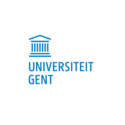In short
Excess weight status, defined as high body mass index (BMI) or high waist circumference, is one of the primary metabolic risk factors for non-communicable diseases (i.e. a disease that is not directly transmissible from one person to another). In Belgium, as in many high-income countries, average BMI has continuously increased over the past decades among both children and adults. Despite the increasing attention at the international level, there is currently no national nutrition and physical activity health plan in Belgium. This project provides proactive policy support for the further development and implementation of evidence-based health policies for the prevention of excessive weight gain.
Project description
The overall objective of project WaIST is to valorise in an integrated framework all available data sources at Sciensano. We use this framework to assess the past, present and future contribution of excess weight status to the societal impact of non-communicable diseases, multimorbidity and disability in Belgium.
To achieve this valorization objective, we focus on 3 Work Packages:
WP1 — Relative contribution of excess weight status as a risk factor for non-communicable diseases, disability and multimorbidity.
We assess the relative health impact of excess weight status among a set of simultaneous (non-modifiable, lifestyle, metabolic, and environmental) exposures and health determinants using attribution models. Outcome indicators include disability, multimorbidity and cause specific mortality. Microdata from different waves of the Belgian Health Interview Survey (HIS) allow to assess the evolution of the relative contribution of excess weight status over time. To support this activity, we
- enrich HIS data with environmental exposure data, and
- develop a statistical approach to assess the contribution of risk factors to health outcomes using complex, cross-sectional data and taking account of mediation and interaction.
WP2 — Health impact of intervention strategies tackling excess weight status.
We use health impact assessments to model the effect of internationally recommended health policies for the prevention of excessive weight gain, in terms of (un)healthy life years and societal impact, for both adults and children. To support this activity, we assess the disease burden and healthcare expenses of excess weight status related non-communicable diseases (diabetes, cardiovascular, cancer).
WP3 — Knowledge translation and policy transfer.
Effective translation and transfer of research findings requires close involvement of stakeholders throughout the course of the project. This transversal WP ensures a close interaction with the national and regional decision makers to support effective translation of the options into actions.
Sciensano's project investigator(s):
Service(s) working on this project
Partners



